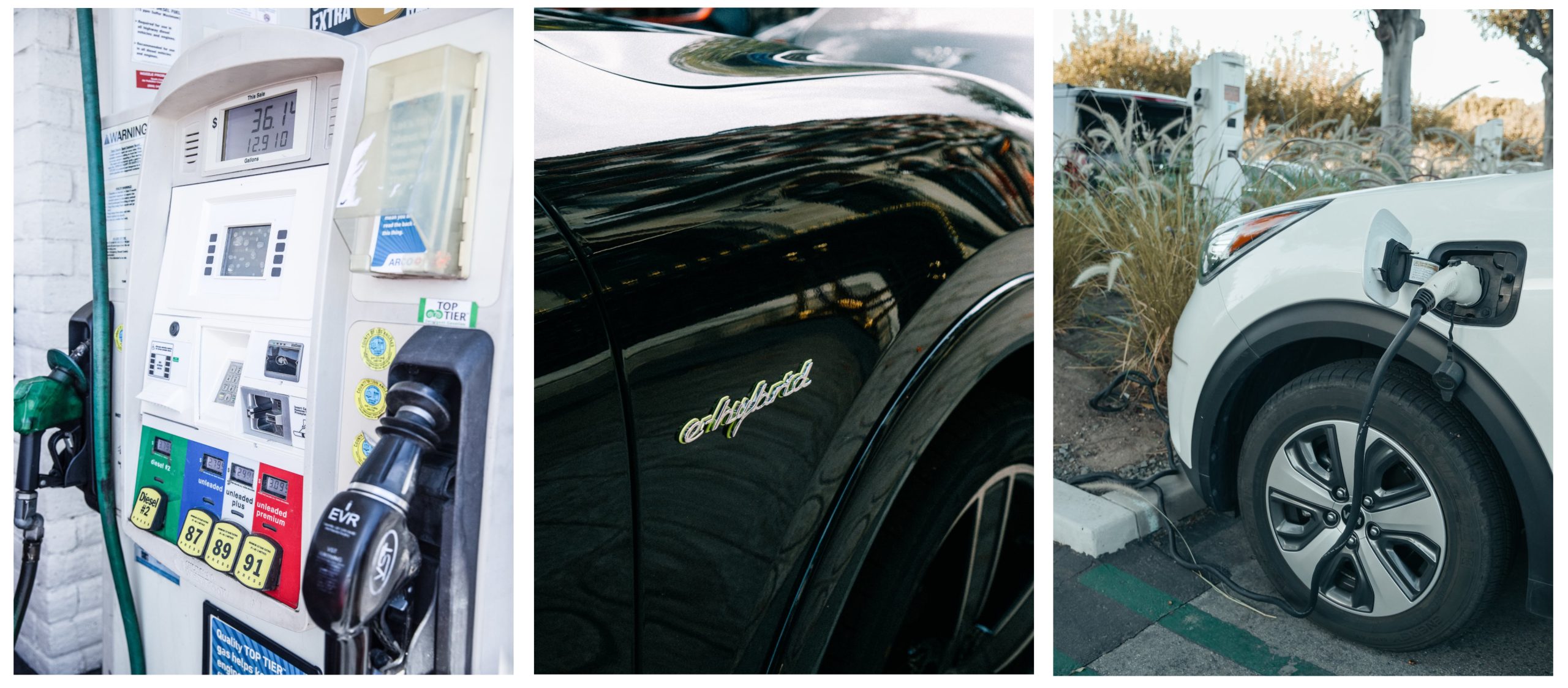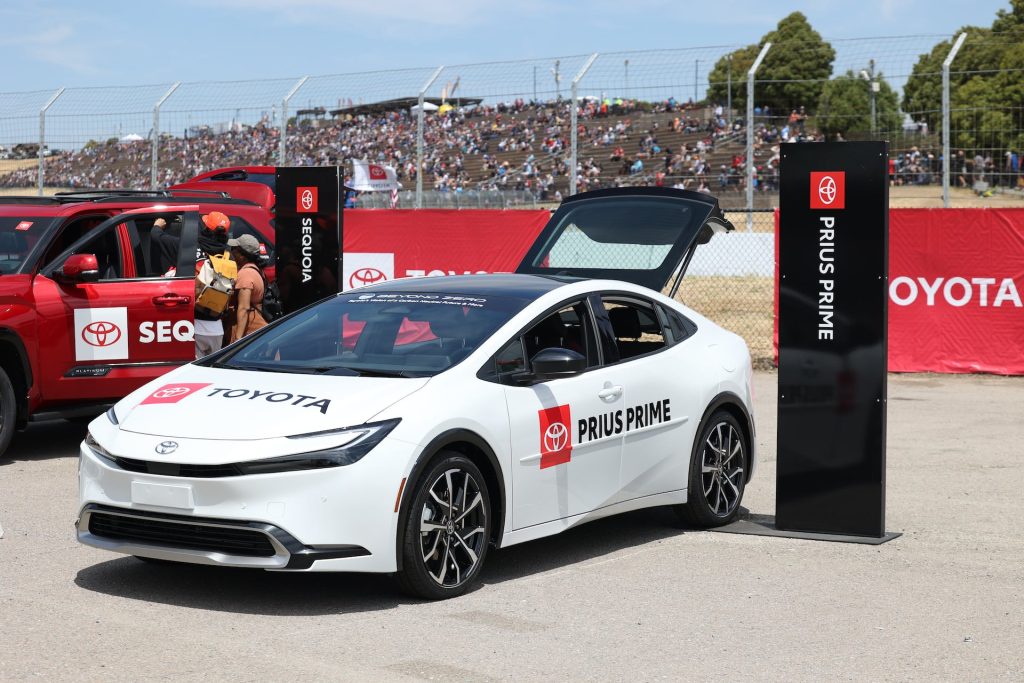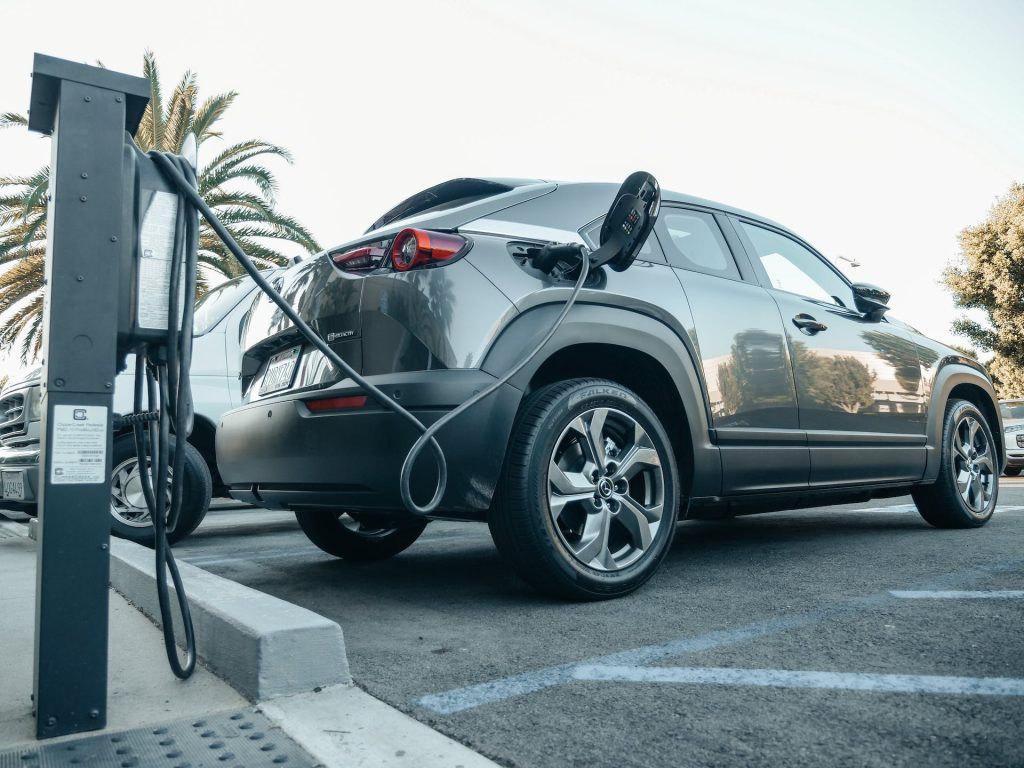
Fueling up or charging up on Savings: Does Your Car’s Engine Impact Insurance Costs?
Dive into the factors influencing car insurance premiums for different engine types: ICE, hybrids, and EVs. Are there hidden cost differentials, or are they all created equal in the eyes of insurers? CheapInsurance.com explores the cost differences between the current popular engine options in new cars.
The question for eco-conscious drivers: does your car’s engine type affect your insurance premium? Are hybrids and EVs magically cheaper to insure, or are we all stuck in the same petrol-powered pricing pool? We’re about to demystify the engine-insurance connection and help you navigate the cost labyrinth with confidence.
Key Takeaways:
- Engine choice matters: While EVs might not always be cheaper to insure initially, their long-term maintenance savings and fuel efficiency can tip the scales.
- Telematics can be your friend: Embrace this data-driven tool to unlock discounts for safe driving and eco-friendly habits, regardless of your engine type.
- The future is flexible: Be prepared to adapt to new insurance models like usage-based plans and shared mobility options as technology advances.
- Transparency is key: Demand clear communication from your insurer about how they use data, value safety features, and reward your eco-conscious choices.
- Customize your coverage: Don’t settle for generic plans. Tailor your insurance to your specific car, driving habits, and budget, ensuring protection without overpaying.
The Usual Suspects: Traditional Factors at Play
Before diving into the green unknown, let’s remember the usual suspects that influence cheap car insurance costs across all engine types:
- Car make and model: Performance-oriented muscle cars and luxury brands typically see higher premiums due to their perceived theft risk and repair costs. This holds true for ICE, hybrid, and even some high-end EVs.
- Your driving history: Clean records and low mileage earn you “good driver” discounts across all engine types. Conversely, accidents and tickets will bump your premium, regardless of whether you fuel up with gas, electricity, or both.
- Your location: Urban areas with higher accident rates typically see inflated premiums compared to safer, rural areas. This applies to all car types, not just EVs seeking greener pastures.
- Coverage options: Comprehensive and collision coverage, while offering peace of mind, come at a price, regardless of your engine type. Choose wisely, balancing protection with affordability.
The Green Factor: Unveiling the Engine-Specific Twists
Now, let’s explore the factors specific to each engine type:
- Internal Combustion Engine (ICE): These gasoline-powered veterans are the baseline, often used for comparison. Their premiums might be influenced by factors like engine size and horsepower, with more powerful models attracting higher rates.
- Hybrids: These fuel-efficient hybrids combine electric motors with gas engines. They might see slightly higher premiums compared to similar ICE models due to their more complex technology and potentially higher repair costs. However, some insurers offer discounts for choosing a hybrid, recognizing their environmental benefits.
- Electric Vehicles (EVs): These battery-powered marvels are the new kids on the block. Their premiums are still evolving, with some insurers charging more due to unfamiliarity with repair costs and battery replacement concerns. Others, however, are embracing the EV revolution and offering discounts for choosing this eco-friendly option.
The Bottom Line: Are There Hidden Cost Differentials?
The answer is: it’s complicated. While engine type can play a role, it’s not the sole determinant of your premium. Your driving habits, car model, and location all contribute significantly. The good news? You have options!
- Shop around: Compare quotes from different insurers, as some might be more EV-friendly or offer hybrid discounts.
- Utilize eco-conscious perks: Ask if your current insurer offers any discounts for environmentally friendly vehicles.
- Consider usage-based insurance: If you’re a low-mileage driver, this option can save you money regardless of your engine type.
Remember, knowledge is power! By understanding these factors and actively seeking out savings opportunities, you can fuel up on cheap car insurance for your green machine, regardless of the engine under the hood.
Beyond the Buzzwords: Demystifying Insurance Jargon for Eco-Friendly Drivers.
Feeling lost in a sea of terms like “regenerative braking” and “telematics discounts”? We’ll translate the jargon and explain how your car’s unique features can affect your insurance quote.
So you’ve embraced the green lane, swapped gas for electrons, and traded your ICE for an EV or hybrid. Congrats! But now you’re bombarded with unfamiliar terms like “regenerative braking” and “telematics discounts” thrown around by your insurance agent. Don’t worry, we’re here to translate the jargon and empower you to navigate this eco-insurance labyrinth with confidence.
Regenerative Braking: Friend or Foe for Your Premium?
This fancy term simply describes how your electric motor acts like a generator when you slow down, converting braking energy back into electricity. Sounds impressive, right? Well, it can have both positive and negative implications for your insurance:
Positive: Some insurers recognize this technology’s potential to reduce wear and tear on brakes, potentially offering small discounts. It also contributes to a cleaner driving experience, which some insurers might reward.
Negative: Not all insurers are familiar with this technology yet, and some might perceive it as an added complexity, potentially leading to slightly higher premiums.
Telematics: Big Brother for Your Battery?
This term refers to devices that track your driving habits (think mini Big Brother for your car). In eco-friendly vehicles, it can monitor things like:
- Fuel efficiency: This data can help insurers understand how you utilize your electric motor and potentially offer usage-based discounts if you’re a frequent charger, not a gas guzzler.
- Regenerative braking usage: Frequent use of this technology can show insurers you’re a smooth and efficient driver, potentially lowering your premium.
- Charging habits: This data might be used in the future to tailor your insurance based on your charging infrastructure access and potential risks like public charging stations.
The Jargon Verdict: Not All Buzzwords Bite
While some buzzwords might sound intimidating, they don’t necessarily translate to higher premiums. In fact, some can be your secret weapons for eco-conscious savings! Remember:
- Ask your insurer: Don’t be shy! Clarify how specific features like regenerative braking and telematics might impact your quote. Transparency is key.
- Shop around: Different insurers might place different values on these features. Compare quotes and find one that rewards your eco-friendly driving style.
- Stay informed: The insurance landscape is evolving, especially with EVs and hybrids. Keep up with industry trends and understand how new technologies are shaping insurance costs.
By demystifying the jargon and being proactive, you can become an eco-savvy insurance expert, ensuring your green car gets the green light for affordable coverage. Now, let’s explore if eco-conscious drivers get rewarded with cheaper insurance, beyond just popular buzzwords!
Safety First, Savings Too? Exploring the Link Between Safety Features and Insurance Premiums.
Do advanced safety technologies like automatic emergency braking and lane departure warnings earn you insurance discounts? We’ll unlock the secrets and show you how safety translates to savings.
You’ve chosen the green path, but safety remains paramount. Your hybrid or EV boasts advanced features like automatic emergency braking (AEB) and lane departure warnings (LDW). But do these fancy gadgets translate to sweet insurance discounts? We’re about to reveal the hidden link between safety tech and your premium.
Unpacking the Safety Net: How Tech Saves Lives and Money
Let’s break down how these features can impact your insurance:
Automatic Emergency Braking (AEB): This guardian angel automatically applies brakes if a collision is imminent. Insurers love AEB because it reduces the likelihood of accidents, meaning fewer claims for them to pay. This often translates to discounts, rewarding your proactive approach to safety.
Lane Departure Warning (LDW): This gentle nudge alerts you if you’re unintentionally drifting out of your lane. While it might not directly prevent accidents, it can enhance driver awareness and potentially avoid costly fender benders. Some insurers recognize this and offer small discounts for LDW-equipped vehicles.
Adaptive Cruise Control (ACC): This tech maintains a safe distance from the car ahead, reducing the risk of rear-end collisions. Insurers often view ACC favorably, potentially offering discounts for drivers who trust the technology to share the road responsibly.
Beyond the Big Three: Hidden Gems in the Safety Arsenal
Don’t underestimate the power of lesser-known features:
- Blind spot monitoring: This tech detects vehicles hidden in your blind spots, helping you avoid dangerous lane changes. Some insurers appreciate this added layer of awareness and might offer small perks.
- Parking sensors: These eagle-eyed sensors prevent embarrassing (and expensive) parking mishaps. Insurers might reward your parking prowess with minor discounts.
- 360-degree camera: This panoramic view helps you navigate tight spaces and avoid obstacles, potentially reducing the risk of minor dings and scratches. Some insurers might recognize this benefit with small discounts.
The Verdict: Safety Truly Pays Off
While discounts might vary across insurers and car models, the message is clear: safety tech is your friend, both on the road and for your wallet. By choosing a car equipped with these features and informing your insurer about them, you’re actively demonstrating your commitment to safe driving. This proactive approach can translate to tangible savings, making your eco-friendly car even more budget-friendly.
Remember:
- Ask your insurer: Don’t assume they know about all your car’s safety features. Explicitly mention them and inquire about potential discounts.
- Shop around: Compare quotes from different insurers, as their policies might vary in how they value specific safety technologies.
- Embrace the safety net: These features aren’t just for discounts, they’re for your peace of mind and the well-being of yourself and others on the road.
So, go forth and conquer the eco-insurance landscape with confidence, knowing that your commitment to safety can be your key to unlocking both peace of mind and cheaper premiums. Now, let’s dive into the juicy question: are eco-conscious drivers truly rewarded with cheaper insurance

The Green Advantage: Do Eco-Conscious Drivers Get Rewarded with Cheaper Insurance?
Is there an “eco-car discount”? We’ll investigate if insurers are incentivizing environmentally friendly choices with lower premiums for hybrids and EVs.
You’ve swapped your gas guzzler for an eco-champion – a hybrid or EV. You’re saving the planet, but are you saving money on insurance too? Does the industry offer an “eco-car discount,” rewarding your green efforts with lower premiums? Let’s investigate!
The Greening of Insurance: A Patchy Landscape
The good news: there are glimmers of hope! Some insurers are recognizing the potential benefits of eco-friendly vehicles:
- Lower repair costs: EVs, with fewer moving parts, might translate to cheaper repairs in the long run. Some insurers factor this in, offering small discounts.
- Reduced accident risk: Hybrids and EVs often come packed with advanced safety features like AEB and LDW, potentially reducing accident rates. Insurers who value safety might offer eco-car discounts.
- Environmental incentives: Some insurers, embracing sustainability goals, might offer discounts specifically for hybrids and EVs, promoting their eco-friendly mission.
The Green Catch: Not All Insurers Embrace the Planet
However, not all insurers have jumped on the eco-bandwagon. Here’s why your premium might not magically turn green:
- Limited data: EVs are still relatively new, and insurers might lack comprehensive data on repair costs and long-term claims patterns. This uncertainty can lead to higher premiums for some models.
- Battery blues: Replacing a damaged battery in an EV can be expensive. Some insurers, wary of this potential cost, might charge higher premiums, negating any potential eco-friendliness savings.
- Lack of awareness: Not all insurers are actively promoting eco-car discounts. You might need to be proactive and inquire about them, potentially missing out on hidden savings.
The Verdict: It’s Not Always Green, but There’s Hope
So, is there a universal “eco-car discount”? Not yet. But the insurance landscape is evolving, and eco-conscious driving is gaining traction. Here’s what you can do:
- Shop around: Compare quotes from different insurers, highlighting your eco-friendly car. You might find a hidden gem offering discounts you wouldn’t have known about.
- Ask questions: Don’t assume green equals cheap. Be specific about your car’s features and inquire about potential eco-car discounts. Knowledge is power!
- Consider usage-based insurance: If you’re a low-mileage driver, this option can be a win-win, regardless of your engine type. Your eco-conscious lifestyle and responsible driving habits can translate to significant savings.
While the path to green insurance isn’t always smooth, remember: you’re a pioneer! Your efforts are paving the way for a future where eco-friendly choices are rewarded, not just by Mother Nature, but also by your insurance provider.

The Data Dilemma: How Telematics Impact Insurance Costs for All Car Types.
Are those fancy in-car computers tracking your driving habits? We’ll explain how telematics programs can impact your insurance for any engine type, from ICE to EV.
Those fancy in-car computers aren’t just playing music and offering directions – they might be tracking your every move! But fear not, fellow motorists, because we’re here to demystify the world of telematics and its potential impact on your car insurance, regardless of whether you’re an ICE, hybrid, or EV driver. It’s about to get personal (but hopefully, cheaper).
Telematics 101: Big Brother in Your Dashboard?
Think of telematics as a data-gathering co-pilot. It uses GPS, sensors, and even your driving habits to paint a picture of how you handle the road. This data can then be used by insurers to:
- Reward safe driving: Smooth acceleration, maintaining a safe distance, and avoiding harsh braking can earn you discounts, making your eco-conscious driving pay off in more ways than one.
- Personalize your premium: Telematics can create a unique insurance profile based on your actual driving behavior, potentially lowering your premium if you’re a responsible driver, regardless of your engine type.
- Offer usage-based insurance: This pay-as-you-drive model bases your premium on the actual miles you drive, potentially saving you money if you’re a weekend warrior or a city cyclist.
But wait, there’s more! Telematics can also impact your coverage options:
- Roadside assistance: Some insurers use telematics to detect potential breakdowns and offer immediate roadside assistance, giving you peace of mind and potentially lowering your roadside assistance costs.
- Pay-per-mile adjustments: If you’re a low-mileage driver, telematics can help you adjust your coverage to reflect your actual driving habits, potentially saving you significant sums.
The Green Connection: Does Telematics Love EVs?
EV drivers can leverage telematics to their advantage:
- Regenerative braking tracking: Telematics can monitor how often you use regenerative braking, potentially rewarding you for this eco-friendly driving technique with discounts.
- Charging habits analysis: Some insurers might use telematics to understand your charging patterns and adjust your coverage accordingly, potentially offering lower rates if you primarily rely on home charging.
The Verdict: Data for Dollars, Not Doom
Telematics isn’t Big Brother out to get you. It’s a tool to reward responsible driving and potentially save you money, regardless of your engine choice. Here’s how to navigate the data dilemma:
- Ask questions: Understand how your specific insurer uses telematics and how it might impact your premium. Transparency is key.
- Opt-in or opt-out: You have the choice! If you’re comfortable sharing your driving data for potential discounts, go for it. If not, you can politely decline.
- Drive smart, regardless: Telematics or not, safe and responsible driving habits are always the best way to keep your insurance costs low and your car protected.
Remember, knowledge is power! By understanding how telematics works and how it can be used for good, you can make informed decisions and potentially unlock eco-friendly savings on your car insurance, regardless of your engine type.
Beyond the Hype: Are EVs Really Cheaper to Insure in the Long Run?
Don’t fall for the greenwashing! We’ll compare long-term insurance costs for all engine types, factoring in repairs, maintenance, and potential risks, to give you a realistic picture.
Before you jump ship and trade your ICE for an EV based solely on “cheaper insurance” claims, let’s dig deeper. Is this just greenwashing hype, or are EVs truly the budget-friendly champions in the long run? We’re about to compare apples (ICE) to oranges (EVs) with all the juicy, and sometimes not-so-juicy, details.
The Cost Conundrum: Beyond the Initial Sticker Shock
Yes, initial insurance premiums for EVs might be higher than their ICE counterparts. This can be due to:
- Unfamiliarity: Insurers are still learning the ropes with EV repair costs and potential risks, leading to cautious pricing.
- Battery blues: Replacing a damaged EV battery can be a wallet-walloping affair, and insurers factor that into their calculations.
- Tech complexity: EVs are packed with advanced technology, and some insurers might view that as an added repair risk, bumping up initial premiums.
Don’t let the initial shock scare you away. EVs might offer long-term savings in these areas:
- Fuel efficiency: Say goodbye to gas station woes! Your electricity bill might be lower than your fueling costs, translating to significant savings in the long run.
- Fewer moving parts: EVs have fewer complex mechanisms compared to ICE vehicles, potentially leading to less frequent and cheaper repairs.
- Regenerative magic: This eco-friendly braking technique can extend the lifespan of your brake pads, saving you money on replacements.
The Maintenance Maze: Friend or Foe to Your Wallet?
EVs boast lower maintenance needs compared to ICE vehicles:
- No oil changes: Say goodbye to greasy hands and scheduled oil changes! This alone can save you hundreds of dollars annually.
- Reduced wear and tear: Regenerative braking takes the load off traditional brakes, leading to longer brake pad life.
- Fewer filters and fluids: EVs have simpler systems, meaning fewer filters and fluids to replace, further reducing maintenance costs.
The Risk Factor: Are EVs Accident Prone?
Here’s where things get interesting:
- Instant torque: EVs deliver instant acceleration, which can be tempting for some drivers, potentially increasing the risk of accidents.
- Distracting tech: Advanced features like autopilot can be misused, leading to driver negligence and accidents.
- Charging infrastructure: Public charging stations might pose theft or vandalism concerns, impacting insurance costs in some areas.
The Verdict: A Tale of Two Timelines
While EVs might come with slightly higher initial insurance premiums, their long-term maintenance savings and potential fuel efficiency could tip the scales in your favor. However, remember, your driving habits and location play a significant role.
The Eco-Conscious Takeaway:
- Do your research: Compare insurance quotes across different companies, factoring in your driving profile and location.
- Consider usage-based insurance: If you’re a low-mileage driver, this option can be a win for your wallet, regardless of your engine type.
- Drive smart, regardless: Eco-friendly driving habits translate to lower accident risks, benefiting your wallet and the planet.
Don’t fall for the greenwashing hype. EVs offer long-term cost benefits, but they’re not a magic bullet. Be informed, compare options, and drive responsibly. Then, you can truly choose the engine that fuels both your eco-friendly spirit and your budget-conscious heart.

The Future of Fuel, the Future of Insurance: Gearing Up for a Changing Landscape.
As technology evolves and car options diversify, what does the future hold for car insurance? We’ll explore potential trends and how they might affect your premiums, regardless of your engine choice.
We’ve navigated the eco-insurance labyrinth, compared engines like apples to oranges, and unearthed hidden savings opportunities. But the road doesn’t end here. Technology is revving its engine, car options are diversifying, and the insurance industry is gearing up for a wild ride. We’re about to explore the future of fuel and its impact on your car insurance, regardless of your engine choice!
Crystal Ball Gazing: Predicting the Insurance Landscape of Tomorrow
Here are some potential trends that might reshape car insurance:
- Telematics takeover: Imagine a world where your driving habits dictate your premium in real-time, rewarding eco-friendly choices with instant discounts. This could be a double-edged sword, but ultimately incentivize safe and responsible driving, benefiting everyone.
- Shared mobility on the rise: Owning a car might become a luxury as ride-sharing and carpooling gain traction. Insurance might shift towards usage-based models, where you pay for the miles you drive, regardless of the engine powering the vehicle.
- Autonomous vehicles enter the scene: Self-driving cars could revolutionize insurance. Imagine near-zero accidents, leading to drastically reduced premiums. But questions arise: who’s responsible for an accident? The car, the manufacturer, or the software developer? This will require a whole new insurance paradigm.
- Alternative fuels emerge: Hydrogen-powered vehicles, anyone? As new fuel sources become mainstream, insurance companies will need to adapt, analyzing repair costs, safety features, and potential risks associated with these novel technologies.
What does this mean for you, the eco-conscious driver?
- Stay informed: Keep your finger on the pulse of industry trends. Understanding the evolving landscape will empower you to make informed choices about your car and insurance coverage.
- Embrace adaptability: Be open to new insurance models like usage-based plans or shared mobility options. Your future car might not even have an engine, so flexibility will be key.
- Demand transparency: As technology advances, demand clear communication from your insurer. Understand how data is used, how safety features are valued, and how your eco-friendly habits are rewarded.
The Bottom Line: The Future is Green (and Flexible)
The future of car insurance might be unpredictable, but one thing’s clear: eco-consciousness will play a central role. Whether you’re an ICE loyalist, a hybrid enthusiast, or an EV evangelist, embracing technology, staying informed, and demanding transparency will be your keys to navigating the ever-changing insurance landscape. So, hold on tight, eco-warriors, and get ready for a thrilling ride towards a greener, safer, and more sustainable future for both our cars and our wallets!
The Final Lap: Choosing the Right Coverage for Your Green Machine.
Ready to hit the road with confidence? We’ll help you tailor your insurance coverage to your specific car type, driving habits, and budget, ensuring you’re protected without overpaying.
Congratulations, eco-warriors! You’ve navigated the eco-insurance labyrinth, compared engines like apples to oranges, and explored the exciting (and sometimes confusing) future of car insurance. Now, it’s time to put the theory into practice and choose the perfect coverage for your green machine. It’s customization time!
First things first:
- Know your car: Understand your engine type, safety features, and any unique quirks specific to your model. This knowledge is power when talking to insurers.
- Assess your driving habits: Are you a weekend warrior or a daily commuter? Do you mostly drive in the city or venture on long road trips? Tailor your coverage based on your actual usage.
- Evaluate your budget: Be honest about what you can comfortably afford. Don’t overspend on unnecessary coverage just because it sounds green.
Now, let’s customize your coverage:
For ICE drivers:
- Focus on comprehensive coverage: Older cars might be more susceptible to theft or vandalism. Consider adding roadside assistance for peace of mind.
- Don’t overspend on collision: If your car has high mileage, collision coverage might not be worth the cost-benefit trade-off.
- Explore usage-based insurance: This option can be a win if you’re a low-mileage driver.
For hybrid drivers:
- Consider hybrid-specific discounts: Some insurers reward hybrid ownership. Ask about them!
- Balance comprehensive and collision: Hybrids can be expensive to repair. Find a coverage sweet spot that protects your vehicle without breaking the bank.
- Look for regenerative braking perks: Some insurers might offer discounts for frequent use of this eco-friendly technique.
For EV champions:
- Embrace telematics: If you’re comfortable, telematics can unlock eco-driving discounts and personalized coverage based on your actual data.
- Factor in battery coverage: Consider adding optional coverage for this expensive component, especially if you’re leasing your EV.
- Explore charging station coverage: If you rely on public charging, this add-on might be worth considering for added peace of mind.
Remember:
- Shop around: Compare quotes from multiple insurers, highlighting your car’s unique features and eco-friendly driving habits.
- Ask questions: Don’t be shy! Get all your doubts and concerns clarified before committing to a policy.
- Read the fine print: Understand exclusions, deductibles, and coverage limitations before signing on the dotted line.

The Green Flag: Drive Insured, Drive Eco-Conscious
With knowledge, careful consideration, and a bit of comparison shopping, you can choose the perfect insurance coverage for your green machine. Remember, it’s not just about the engine; it’s about finding protection that fits your car, your driving habits, and your budget, all while supporting your eco-friendly choices. So hit the road with confidence, knowing you’re covered without overpaying!
Related Reading:
States with Low-Income Car Insurance Programs
The Secret to Finding Affordable Car Insurance for Young Drivers
How to Lower Your Car Insurance Rates Overnight
How to Get Cheap Car Insurance for a New Car
How to Avoid Scams When Shopping for Car Insurance
The 5 Most Common Car Insurance Mistakes
First Look: The 10 Best Cheap Car Insurance Companies of 2024
Find The Best Cheap Car Insurance Quotes Today
How Often Should You Get a Car Insurance Quote
Top 10 Tips for Getting Cheap Insurance


